Price: Starts from ₹ 83,000
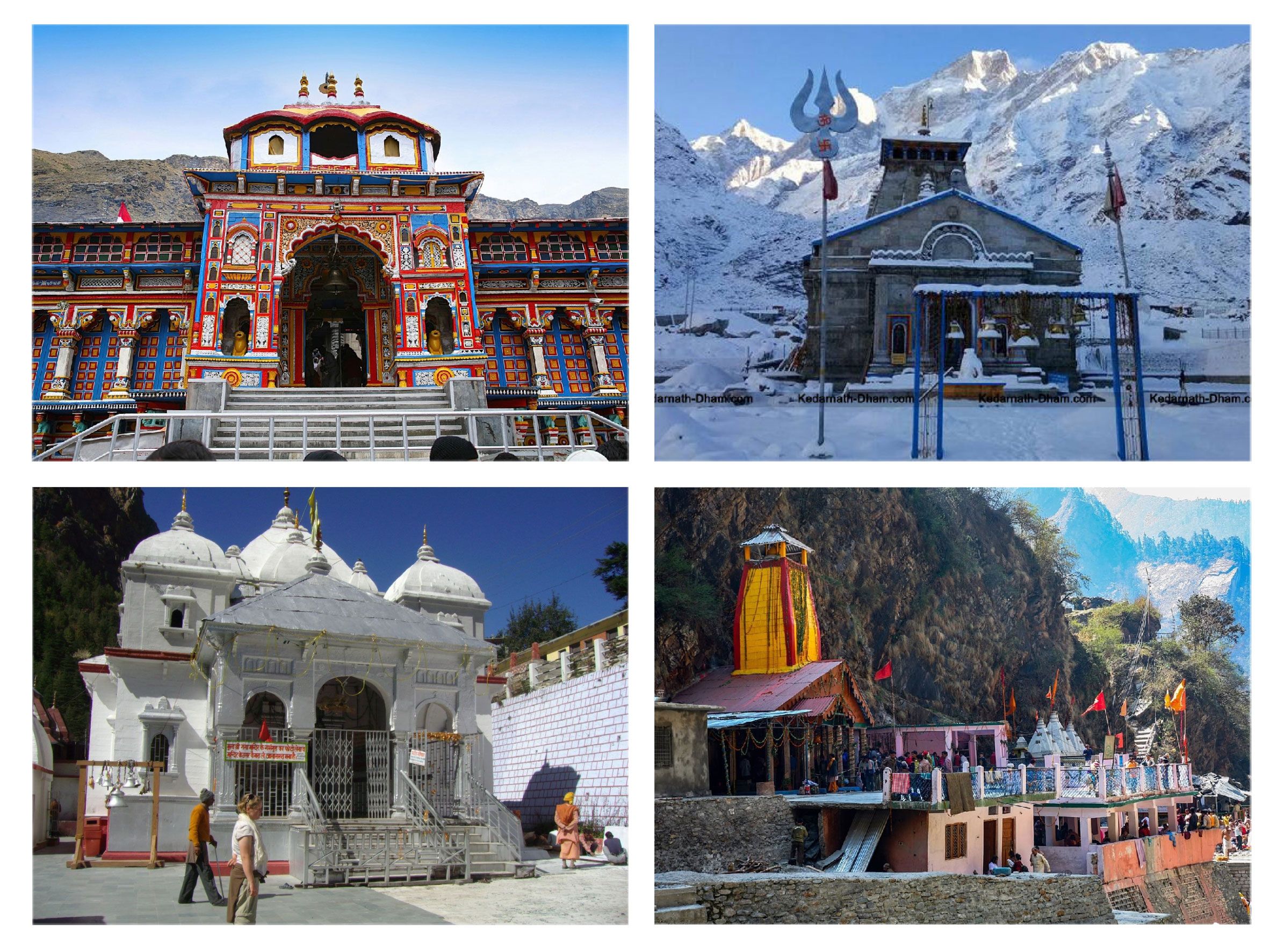
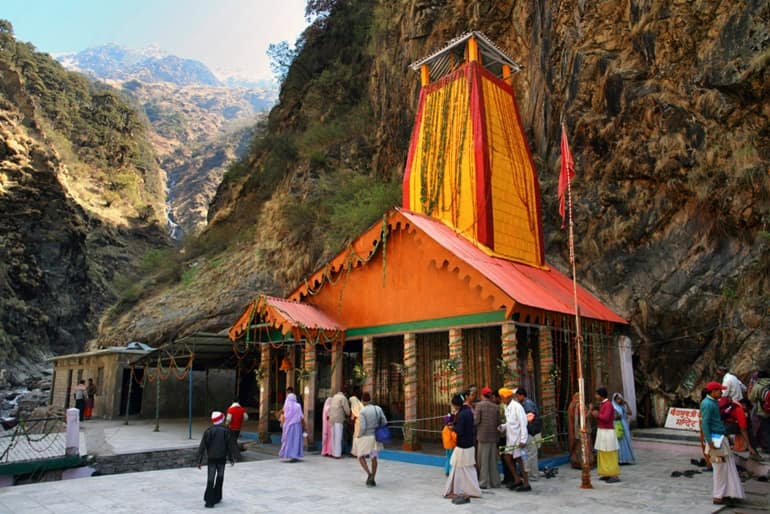
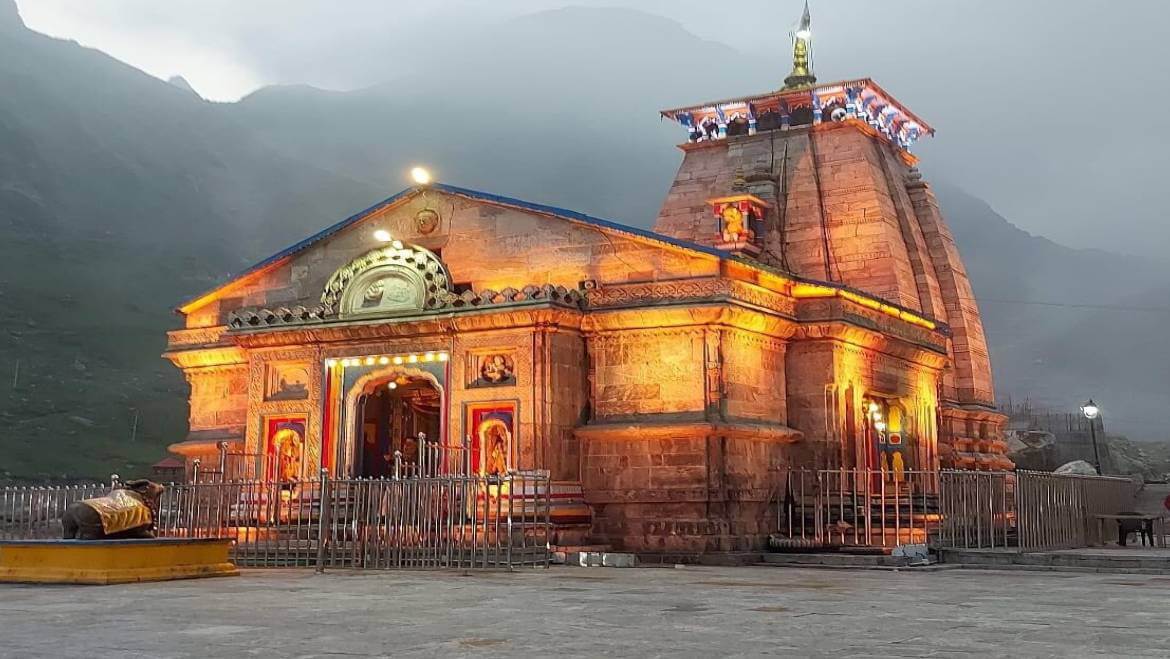
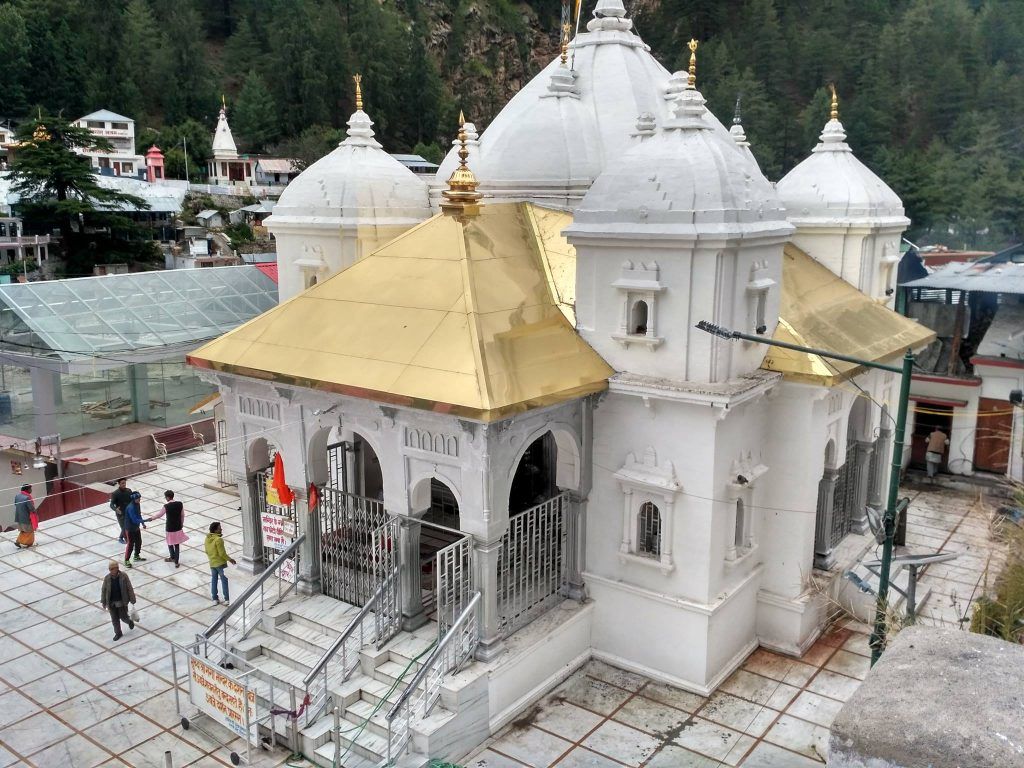
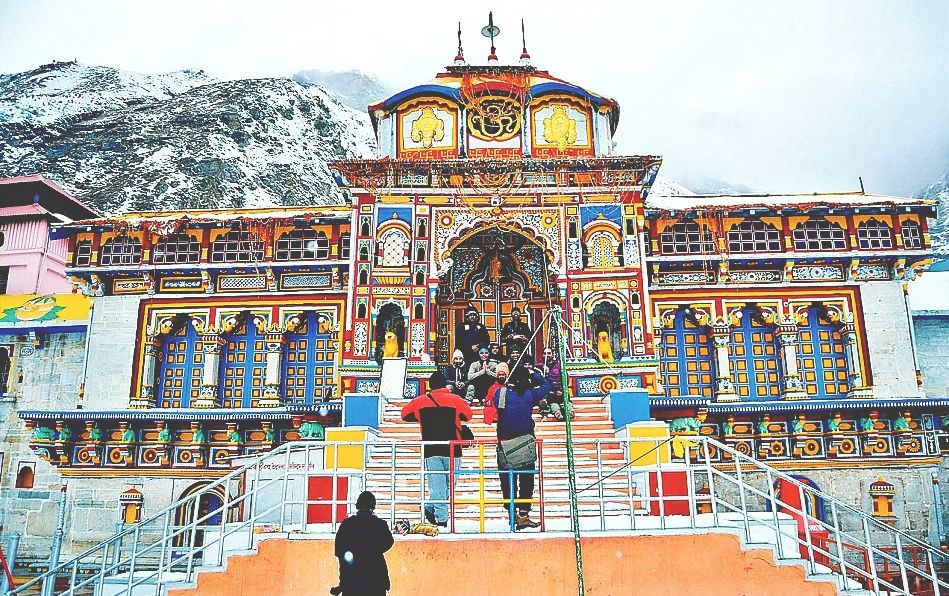





| Departure Dates | May to October |
|---|---|
| Tour Code | CHARDHAM Y |
| EX | Delhi/Dehradun |
| Vehicles Used | Reserved vehicle depends on group size |
| Duration | 11 Nights/12 Days |
| States/Countries Visited | Uttarakhand |
| Places Visited | DELHI/ DEHRADUN-HARIDWAR-BARKOT-YAMUNOTRI-UTTARKASHI-GANGOTRI-GUPTKASHI-KEDARNATH-BADRINATH-RUDRAPRAYAG-RISHIKESH-HARIDWAR-DELHI / DEHRADUN |
| Best Time To Visit | May - October |
| Category | Classic | Standard | Deluxe | Super Deluxe | Luxury | Premium |
|---|---|---|---|---|---|---|
| India Tours | ₹83,000 | ₹90,000 | ₹98,000 | ₹106,000 | ₹127,500 | ₹156,500 |
An Evening at Ganga aarti Haridwar: The Ganga Aarti in Hardwar’s Har-ki-Pauri is one of the famous rituals in India. It starts at around 6.30pm after sunset, with large crowds gathered around both the banks of a canal that carries the waters of Ganges. Loud speakers blare songs in praise of Ganga Maiya and Shiva. The time of Aarti sees a bustle of activity on the ghats a pack of diya comes fully equipped and is self-sufficient! It has a wick lamp surrounded by flowers It lasted for around 30 min.
Hanuman Chatti: The confluence of Hanuman Ganga & Yamuna River.
Yamunotri Temple: Maharani Gularia of Jaipur built the temple in the 19th Century. It was destroyed twice in the present century and rebuilt again.
Surya Kund: There are a Number of thermal springs in the vicinity of the temple, which flows into numerous pools. The most important of these is Surya Kund.
Divya Shila: A rock pillar, worshipped before entering the Yamunotri Temple.
Yamunotri- Yamunotri is situated in the western region of the Garhwal Himalayas and is at a height of 3,235 meters above sea level. Yamunotri is the source of the river Yamuna.The shrine of Yamunotri is located on the Bandar Poonch peak.
Uttarkashi: Situated at the bank of river Bhagirathi. The temple of Lord Vishwanath is located here where a massive iron trident is erected. The other important temples situated here are Ekadash Rudra, Bhairav, Gyaneshwar and Goddess Kuteti Devi.
Gangotri- Gangotri is the place high in the Garhwal Himalayas from where the holy Ganges originates. According to the legend, it was here the Ganga descended on the earth, when Lord Shiva released the mighty river from the locks of his hair. The temple of Gangotri, dedicated to Goddess Ganga stands on the banks of the river.
Shri Kedarnath- is a majestic sight, standing in the middle of a wide plateau surrounded by lofty snow Covered peaks. The temple of Kedarnath, located at a height of 3,581 mts, stand at the head of the Mandakini river. The present temple, built in the 8th century by Adi Shankaracharya, stands adjacent to the site of an earlier temple built by the Pandavas. The inner walls of the assembly hall are decorated with figures of various deities and scenes from mythology. Outside the temple door a large statue of the Nandi Bull stands as guard. It is said that devotees who die here become one with Shiva himself.Shri Badrinath- Shri Badrinath is one of the most important of all the four(Char) Dhams in India. This temple located between Nar & Narayan mountain ranges and in the shadow of Nilkantha peak at the height of 3,133 mts. It is the most popular of Vishnu pilgrimages among the five Badries, also known as Vishal Badri.
Tapt Kund: Natural thermal springs on the banks of the river Alaknanda, where it is customary to bathe before entering the Badrinath temple.
Narad Kund: A recess in the river, near Tapt Kund, forming a pool from where the Badrinath idol was recovered.
Mata Murty Temple: Devoted to the mother of Sri Badrinathji. Other important temples include SeshNetra Temple, Urvashi Temple and Charan Paduka
Mana Village: Inhabited by an Indo-Mongolian tribe, it is the last Indian village before Tibet.
Bhim Pul: on the other side of Mana village, a massive rock forming a natural bridge lies
Over the roaring Saraswati River. It presents a spectacular view of water thundering down through the narrow passage under the rock and is believed to have been placed there by Bhim, the second eldest among the five Pandava brothers.
Vyas Gufa (cave): Near Mana Village, this is a rock-cave where Ved Vyas is believed to have composed the Mahabharata and the pauranic commentaries.
Rudraprayag: One of the holy prayag of five famous prayag of Uttarakhand. Confluence of River Alaknanda and Mandakini.
Narsingh Temple: This is an ancient temple of Lord Vishnu in Narsingh Avtar and main temple of Joshimath. When Badrinath temple remains closed during winter every year, one idol of Lord Badri is brought to Narsingh temple and worshiped for six months.
Panch Prayags of Garhwal Himalayas: Vishnuprayag (Alaknanda River and Dhauliganga River), Nandprayag (Alaknanda River and Nandakini River), Karnprayag (Alaknanda River, and Pindar River), Rudraprayag (Alaknanda River and Mandakini River) & Devprayag (Alaknanda River and Bhagirathi River).
All transfers & sightseeing as per itinerary with toll, parking, Driver allowance & taxes
All sightseeing and excursions as per the itinerary
Accommodation on twin / triple sharing basis with taxes
Breakfast & Dinner on fixed menu basis with taxes in places except Kedarnath
Kedaranath stay on Bed basis
Boating, Camera Charges, Special Darshan, Pooja Doli, Pony, Helicopter,etc.
GST 5%
Any up gradation in the room category
Porterage, laundry, consumption from the mini bar / refrigerator at Hotel, beverages, Mineral water, telephone charges, shopping, all items of personal nature and also food and drinks not forming the part of the group menus
In hilly areas the Air condition in vehicles will be turned off
Guide Tips, Driver tips, Restaurant Tips and all kinds of Tips
Any meals (Breakfast, Lunch, Dinner) other than mentioned in the itinerary
Anything not mentioned in cost includes
Air tickets.
Breakfast
| Departure Dates | May to October |
|---|---|
| Tour Code | CHARDHAM Y |
| EX | Delhi/Dehradun |
| Vehicles Used | Reserved vehicle depends on group size |
| Duration | 11 Nights/12 Days |
| States/Countries Visited | Uttarakhand |
| Places Visited | DELHI/ DEHRADUN-HARIDWAR-BARKOT-YAMUNOTRI-UTTARKASHI-GANGOTRI-GUPTKASHI-KEDARNATH-BADRINATH-RUDRAPRAYAG-RISHIKESH-HARIDWAR-DELHI / DEHRADUN |
| Best Time To Visit | May - October |
| Category | Price |
|---|---|
| Classic | ₹83,000 |
| Standard | ₹90,000 |
| Delux | ₹98,000 |
| Super Delux | ₹106,000 |
| Luxury | ₹127,500 |
| Premium | ₹156,500 |
An Evening at Ganga aarti Haridwar: The Ganga Aarti in Hardwar’s Har-ki-Pauri is one of the famous rituals in India. It starts at around 6.30pm after sunset, with large crowds gathered around both the banks of a canal that carries the waters of Ganges. Loud speakers blare songs in praise of Ganga Maiya and Shiva. The time of Aarti sees a bustle of activity on the ghats a pack of diya comes fully equipped and is self-sufficient! It has a wick lamp surrounded by flowers It lasted for around 30 min.
Hanuman Chatti: The confluence of Hanuman Ganga & Yamuna River.
Yamunotri Temple: Maharani Gularia of Jaipur built the temple in the 19th Century. It was destroyed twice in the present century and rebuilt again.
Surya Kund: There are a Number of thermal springs in the vicinity of the temple, which flows into numerous pools. The most important of these is Surya Kund.
Divya Shila: A rock pillar, worshipped before entering the Yamunotri Temple.
Yamunotri- Yamunotri is situated in the western region of the Garhwal Himalayas and is at a height of 3,235 meters above sea level. Yamunotri is the source of the river Yamuna.The shrine of Yamunotri is located on the Bandar Poonch peak.
Uttarkashi: Situated at the bank of river Bhagirathi. The temple of Lord Vishwanath is located here where a massive iron trident is erected. The other important temples situated here are Ekadash Rudra, Bhairav, Gyaneshwar and Goddess Kuteti Devi.
Gangotri- Gangotri is the place high in the Garhwal Himalayas from where the holy Ganges originates. According to the legend, it was here the Ganga descended on the earth, when Lord Shiva released the mighty river from the locks of his hair. The temple of Gangotri, dedicated to Goddess Ganga stands on the banks of the river.
Shri Kedarnath- is a majestic sight, standing in the middle of a wide plateau surrounded by lofty snow Covered peaks. The temple of Kedarnath, located at a height of 3,581 mts, stand at the head of the Mandakini river. The present temple, built in the 8th century by Adi Shankaracharya, stands adjacent to the site of an earlier temple built by the Pandavas. The inner walls of the assembly hall are decorated with figures of various deities and scenes from mythology. Outside the temple door a large statue of the Nandi Bull stands as guard. It is said that devotees who die here become one with Shiva himself.Shri Badrinath- Shri Badrinath is one of the most important of all the four(Char) Dhams in India. This temple located between Nar & Narayan mountain ranges and in the shadow of Nilkantha peak at the height of 3,133 mts. It is the most popular of Vishnu pilgrimages among the five Badries, also known as Vishal Badri.
Tapt Kund: Natural thermal springs on the banks of the river Alaknanda, where it is customary to bathe before entering the Badrinath temple.
Narad Kund: A recess in the river, near Tapt Kund, forming a pool from where the Badrinath idol was recovered.
Mata Murty Temple: Devoted to the mother of Sri Badrinathji. Other important temples include SeshNetra Temple, Urvashi Temple and Charan Paduka
Mana Village: Inhabited by an Indo-Mongolian tribe, it is the last Indian village before Tibet.
Bhim Pul: on the other side of Mana village, a massive rock forming a natural bridge lies
Over the roaring Saraswati River. It presents a spectacular view of water thundering down through the narrow passage under the rock and is believed to have been placed there by Bhim, the second eldest among the five Pandava brothers.
Vyas Gufa (cave): Near Mana Village, this is a rock-cave where Ved Vyas is believed to have composed the Mahabharata and the pauranic commentaries.
Rudraprayag: One of the holy prayag of five famous prayag of Uttarakhand. Confluence of River Alaknanda and Mandakini.
Narsingh Temple: This is an ancient temple of Lord Vishnu in Narsingh Avtar and main temple of Joshimath. When Badrinath temple remains closed during winter every year, one idol of Lord Badri is brought to Narsingh temple and worshiped for six months.
Panch Prayags of Garhwal Himalayas: Vishnuprayag (Alaknanda River and Dhauliganga River), Nandprayag (Alaknanda River and Nandakini River), Karnprayag (Alaknanda River, and Pindar River), Rudraprayag (Alaknanda River and Mandakini River) & Devprayag (Alaknanda River and Bhagirathi River).
| Day 1: Delhi / Dehradun – Haridwar (240kms/6-7hrs) |
|---|
| Meet our driver at Delhi airport /station / hotel / home and drive to Haridwar. Check into the hotel arrival in Haridwar. Evening visit Mansa Devi Temple & Ganga aarti at Har Ki Pauri. Overnight stay at Haridwar.An Evening at Ganga aarti Haridwar: The Ganga Aarti in Hardwar’s Har-ki-Pauri is one of the famous rituals in India. It starts at around 6.30pm after sunset, with large crowds gathered around both the banks of a canal that carries the waters of Ganges. Loud speakers blare songs in praise of Ganga Maiya and Shiva. The time of Aarti sees a bustle of activity on the ghats a pack of diya comes fully equipped and is self-sufficient! It has a wick lamp surrounded by flowers It lasted for around 30 min. |
| Day 2: Haridwar - Barkot (210kms/7-8hrs) |
| Morning after breakfast transfer to Barkot On arrival, check-in at the hotel in Barkot for dinner & overnight stay. |
| Day 3: Barkot - Yamunotri - Barkot {42kms Drive/5 Kms Trek (one Side) |
| Early morning after breakfast (packed breakfast), drive to Jankichatti / Phoolchatti & trek from here to Yamunotri (6kms) (Either by walk or by horse or by Doli at own cost). After taking a bath in Jamunabai Kund’s warm water and cook rice by packing it in a cloth and dipping it in the hot water of the hot kund. Pilgrims take this cooked rice home as |
| Day 4: Barkot - Uttarkashi (100 Kms/4hrs) |
| Morning after a leisurely breakfast, drive to Uttarkashi. Check into the hotel arrival in Uttarkashi. Evening visit Kashi Vishwanath Temple in Uttarkashi. Overnight stay at Uttarkashi. Uttarkashi: Situated at the bank of river Bhagirathi. The temple of Lord Vishwanath is located here where a massive iron trident is erected. The other important temples situated here are Ekadash Rudra, Bhairav, Gyaneshwar and Goddess Kuteti Devi. |
| Day 5: Uttarkashi - Gangotri - Uttarkashi (120kms/5 Hrs Each Side) |
| Early morning (packed breakfast) drive to Gangotri(3048 mts), enroute at Gangnani take a holy dip in Garam Kund, have bath drive to Gangotri via beautiful Harsil Valley. Harsil is famous for its natural beauty and for the majestic views of the Deodar trees and mountains. On arrival at Shree Gangotri, take a holy dip in the sacred river Ganges which is also called Bhagirathi at its origin. Perform Pooja and Darshan, after that relax for some time in the lovely surroundings. Later drive back to Uttarkashi. Overnight stay at Uttarkashi. Gangotri- Gangotri is the place high in the Garhwal Himalayas from where the holy Ganges originates. According to the legend, it was here the Ganga descended on the earth, when Lord Shiva released the mighty river from the locks of his hair. The temple of Gangotri, dedicated to Goddess Ganga stands on the banks of the river. |
| Day 6: Uttarkashi – Guptkashi/sitapur (290kms/8-9hrs) |
| Morning after breakfast, drive to Guptkashi via Moolgarh & Lambgoan. Enroute you can see the beautiful river Mandakini at Tilwara. The Mandakini River comes from Kedarnath, drive alongside the river to reach Guptkashi, visit ArdhNarishwar Temple in Guptkashi. Check into the hotel arrival in Guptkashi. Overnight stay at Guptakashi. |
| Day 7: Guptkashi/sitapur – Shri Kedarnath Ji {32kms Drive/19kms Trek (one Side)} |
| Morning after breakfast drive to Gaurikund, Trek start from Gaurikund to Shri Kedarnath ji (3584 mts) on foot or on by pony / Doli. Yatra members should carry personal medicines, heavy woolen, toiletries and clothes for an overnight halt at Shri Kedarnath. Check in Hotel. After freshening up, visit Shri Kedarnath ji Temple & perform Pooja. In the evening also visit Adi Shankaracharya Samadhi behind the Temple. Overnight stay at Kedarnath hotel. Shri Kedarnath- is a majestic sight, standing in the middle of a wide plateau surrounded by lofty snow Covered peaks. The temple of Kedarnath, located at a height of 3,581 mts, stand at the head of the Mandakini river. The present temple, built in the 8th century by Adi Shankaracharya, stands adjacent to the site of an earlier temple built by the Pandavas. The inner walls of the assembly hall are decorated with figures of various deities and scenes from mythology. Outside the temple door a large statue of the Nandi Bull stands as guard. It is said that devotees who die here become one with Shiva himself. |
| Day 8: Shri Kedarnath - Guptkashi/sitapur {19kms(trek)/32kms 6hrs} |
| On this day we will stay in Sitapur to keep a buffer time in hand to handle any last moment delay because of bad weather or any technical or medical reason. This is the best way to arrange an itinerary or program for both trekkers and flyers to Shri Kedarnath Ji. In lack of geographical knowledge and climate conditions of this divine land some passengers. |
| Day 9: Guptkashi/sitapur- Shri Badrinath (220kms/7hrs) |
| Morning after breakfast, drive to Shri Badrinath. Check in to the hotel arrival in Shri Badrinath. Pilgrims after having a bath in the Taptkund have the Darshan of Badrivishal & Aarti in the evening. Brahma Kapal is significant for Pind Daan Shraddh of ancestors (Pitrus). There are other interesting sightseeing spots like Mana, Vyas Gufa, Mata Murti, Charanpaduka, Bhimkund and the “Mukh” of the Saraswati River. Just within the three kms of Badrinath Ji. Overnight stay at Shri Badrinath. Shri Badrinath- Shri Badrinath is one of the most important of all the four(Char) Dhams in India. This temple located between Nar & Narayan mountain ranges and in the shadow of Nilkantha peak at the height of 3,133 mts. It is the most popular of Vishnu pilgrimages among the five Badries, also known as Vishal Badri. Tapt Kund: Natural thermal springs on the banks of the river Alaknanda, where it is customary to bathe before entering the Badrinath temple. Narad Kund: A recess in the river, near Tapt Kund, forming a pool from where the Badrinath idol was recovered. Mata Murty Temple: Devoted to the mother of Sri Badrinathji. Other important temples include SeshNetra Temple, Urvashi Temple and Charan Paduka Mana Village: Inhabited by an Indo-Mongolian tribe, it is the last Indian village before Tibet. Bhim Pul: on the other side of Mana village, a massive rock forming a natural bridge lies Over the roaring Saraswati River. It presents a spectacular view of water thundering down through the narrow passage under the rock and is believed to have been placed there by Bhim, the second eldest among the five Pandava brothers. Vyas Gufa (cave): Near Mana Village, this is a rock-cave where Ved Vyas is believed to have composed the Mahabharata and the pauranic commentaries. |
| Day 10: Badrinath - Mana - Joshimath - Pipalkoti / Rudraparayag / Srinagar |
| orning after breakfast, driver for Rudraprayag via Pipalkoti. Visit on the way Narsingh Temple in Joshimath later drive back to Rudraprayag via Joshimath. Check into the hotel arrival in Pipalkoti/ Joshimath/ Srinagar/ Rudraprayag. Overnight stay at Pipalkoti/ Joshimath/ Srinagar/ Rudraprayag. Rudraprayag: One of the holy prayag of five famous prayag of Uttarakhand. Confluence of River Alaknanda and Mandakini. Narsingh Temple: This is an ancient temple of Lord Vishnu in Narsingh Avtar and main temple of Joshimath. When Badrinath temple remains closed during winter every year, one idol of Lord Badri is brought to Narsingh temple and worshiped for six months. |
| Day 11: Pipalkoti/rudraprayag / Srinagar - Haridwar (165kms/5-6hrs) |
| Morning after breakfast, drive for Haridwar via Rishikesh.Rishikesh Place of sages’ is a celebrated spiritual town on the bank of Ganga and is surrounded by Shivalik range of the Himalayas on three sides. It is said that when Raibhya Rishi did hard penances, God appeared by the name of ” Hrishikesh ” and this area hence firth came to be known as Rishikesh. Later visit RishikeshTemples Sightseeing – LaxmanJhulla, Ram Jhulla. Stay at Haridwar. |
| Day 12: Haridwar - Dehradun / Delhi (240kms/6-7hrs) |
| Morning, after breakfast, check-out from the hotel and drive back to Delhi / Dehradun. On Arr. Delhi, transfer to Railway Station/Airport. |
All transfers & sightseeing as per itinerary with toll, parking, Driver allowance & taxes
All sightseeing and excursions as per the itinerary
Accommodation on twin / triple sharing basis with taxes
Breakfast & Dinner on fixed menu basis with taxes in places except Kedarnath
Kedaranath stay on Bed basis
Boating, Camera Charges, Special Darshan, Pooja Doli, Pony, Helicopter,etc.
GST 5%
Any up gradation in the room category
Porterage, laundry, consumption from the mini bar / refrigerator at Hotel, beverages, Mineral water, telephone charges, shopping, all items of personal nature and also food and drinks not forming the part of the group menus
In hilly areas the Air condition in vehicles will be turned off
Guide Tips, Driver tips, Restaurant Tips and all kinds of Tips
Any meals (Breakfast, Lunch, Dinner) other than mentioned in the itinerary
Anything not mentioned in cost includes
Air tickets.
Breakfast